Best Cover Letter Fonts for Applications
When you submit a job application, it’s important that hiring managers can read your cover letter and resume easily. Choosing the right font for your application materials is essential in making this part of the process flow smoothly. In this article, learn what the best cover letter fonts are for your next cover letter.

Why are cover letter fonts important?
Choosing the right font is an important step to making sure your cover letter is legible and professional looking. By selecting a simple, easy-to-read font for your cover letter, you can increase the chance that your job application will make a good first impression on the hiring team.
A cover letter with the correct spacing and size can also make it more visually appealing. A hiring manager may be more likely to read the content of your cover letter if it looks simple and businesslike.
Sometimes, a hiring team may receive hundreds of applications. Since a cover letter is typically the first document a recruiter reviews, the format should be scannable so they can gather basic information about you and your qualifications. If your cover letter impresses a recruiter, they may be more likely to review the rest of your application materials and invite you to an interview.
How to choose the best cover letter font
Follow these steps to choose the best cover letter font:
1. Choose a font that you can use in your cover letter and your resume
When you’re choosing a font for your cover letter, make sure to pick a font that you can use throughout your application and resume. Using one font for both your cover letter and resume creates consistency and looks more professional.
2. Opt for a professional and easy-to-read cover letter font
When choosing a cover letter font, select a simple option that conveys your professionalism. Since the hiring team may read your application on a desktop, laptop or mobile device, you should ensure that your cover letter font is easy to read even on smaller screens.
You can choose between a serif and sans serif font type. Serif fonts have small strokes at the ends of letters. Sans serif fonts have no strokes at the ends of letters. Opting for a serif font can add a personal style to your application, while choosing a sans serif font can make your letter look simple and straightforward.
Here are the most popular cover letter fonts for job applications:
- Times New Roman: As one of the most common fonts for professional documents, Times New Roman can make your cover letter appear uncomplicated. You can use Times New Roman when applying to most companies.
- Garamond: This serif font features a classic appearance that can make both your cover letter and resume look professional. Garamond works best for printed cover letters.
- Cambria: For a less formal option, you can consider Cambria. This is the standard font for Microsoft Word since it’s easy to read for many users.
- Georgia: If you plan to email your cover letter, Georgia is an ideal font. You can also use it if you need to send your materials as electronic documents.
- Arial: This is one of the most popular sans serif fonts, as it is visually appealing on both paper and electronic devices.
- Helvetica: Similar to Arial, Helvetica is a simple, straightforward sans serif font. Many people believe Helvetica has a more sophisticated look, making it a popular option.
- Calibri: With its narrow style, Calibri is easy to read on screens, making it a good choice for electronic applications.
3. Use standard formatting with your font
Your resume might include a variety of text formatting, such as bold or italics, to emphasize various details. However, you should use standard formatting throughout your cover letter for simplicity.
4. Select a professional font size and use it consistently
Choose a font size that is clearly legible. For most fonts, 12-point is the standard size, but some fonts may look better at 10- or 11-point. To find the ideal size for your cover letter, try each of these standard sizes to find the most legible version. Make sure your cover letter easily fits onto a single page.
5. Use appropriate spacing with your cover letter font
The spacing of your cover letter can also have an effect its readability, so it can be helpful to examine different options. Single, double and 1.5 spacing are the most common selections. Remember to leave 1-inch margins around the edges of the document for additional white space and improved legibility.
6. Review your cover letter font choice before submitting
After selecting a font, size and spacing, review the letter prior to submitting it. Make sure the entire cover letter appears both professional and legible. If you are emailing your application materials, consider sending the email to yourself first so you can review first before sending it to the hiring manager.
7. Save the font and formatting you use in your cover letter
If you plan to send your cover letter electronically, take steps to preserve the format first. When you email your application in word processing format, such as a Microsoft Word file, the formatting may not transfer correctly. Consider converting your cover letter and resume to a PDF file to retain the style.
If you intend to copy and paste your cover letter into the body of an email, make sure to reapply the font, sizing and spacing to preserve its appearance.
- Resume Templates
- Resume Examples
- Free Resume Builder
- How to Write a Resume
- Resume Format
- Resume Packs
- Cover Letter Templates
- Cover Letter Examples
- Free Cover Letter Generator
- How To Write a Cover Letter
- CV Templates
- CV Examples
- Free CV Maker
- Resume Help
- Cover Letter Help
- Job Interview
- Career Advice
6 Best Fonts for a Cover Letter (And How to Choose One)
When it comes to job search, every small detail can play for or against you. Spelling, layout, stylistic highlights, fonts — the tiny design tweaks can amplify or muddle the first impression you are to make.
All of the above is true for cover letters too. The easiest way to make the wrong first impression is by using a terrible cover letter font. OK, but which ones are good ones and which ones are bad?
I’ve talked to our graphic design team (the one behind all our resume templates !) to get their scoop on the best fonts for cover letters.
What is the Best Font for a Cover Letter?
The best font for a cover letter is Times New Roman . It’s a classic serif typeface that’s been in use for over 85 years. Times New Roman uses space economically which makes it easier to fit your cover letter into one page. This font looks equally great in print and in digital documents, plus it is supported by all major word processors and email apps. So your cover letter will be 100% readable!
What is the Best Font Size for a Cover Letter?
The best font size for a cover letter is 12 points . This is a standard font size for most business documents — not too big, not too small for different screen sizes. You can also opt for 10 or 11 points cover letter font size if you need to fit more information into one page, but this can affect the readability of your letter.
Best Fonts for a Professional Cover Letter: Overview
Times New Roman is a clear leader, recommended for use by career advisors from MIT , Purdue University , and Boston University among others for both resumes and cover letters.
But because Times New Roman is a serif font, it might be hard to read for people with dyslexia or other types of reading disorders . So if you want to be extra mindful, you can look for another professional cover letter font.
Just make sure it is:
- Serif or sans serif (avoid calligraphic typefaces)
- Readable (i.e. don’t have too many fancy elements)
- Widely supported by word processing apps
- Not Comic Sans (which is universally deemed unprofessional)
To help you narrow down your choice, here are several more best fonts for a professional cover letter we recommend using.
1. Arial
Arial font has been around since the 1980s. You are probably well-familiar with it if you are a Windows user. Arial has been the default font for this operating system since the 1990s. It’s a web-friendly sans serif typeface. However, many graphic designers suggest avoiding Arial in print as it ends up looking somewhat plain, especially in bigger sizes.
But since most of us dispatch email cover letters these days, it shouldn’t be much of a concern.
2. Helvetica
Helvetica is a Swiss-born typeface as its name indicates (Helvetia is the Latin word for Switzerland). Originally created by a freelance designer for a Haus foundry, it became hugely popular thanks to Apple. While Microsoft chose Arial as the main font for its OS, Apple picked Helvetica for the same purpose.
Helvetica is also a sans serif font and it’s very readable. That’s because it has even kerning in any variation — bold, italic, or skinny — which gives the reader a sense of clean spacing.
3. Calibri
Calibri is a digital-native sans serif post. It was created specifically for online documents in the early 2000s — and presented to the general public with Microsoft Office 2007 and Windows Vista releases. Up till today, it remains the default font in MS Office.
It has a pleasant rounded feel to it, paired with a tight layout. Thanks to it, you can flexibly change text size without losing resolution. So if you need to fit a longer cover letter into one page , try using Calibri in size 11.
4. Georgia
Don’t let this name trick you — the Georgia typeface was designed in the US in the 1990s for Microsoft corporation (again). But it was introduced only in 2006 as one of the standard fonts.
Georgia was originally envisioned as an alternative serif font to Times New Roman, which would look better on smaller screen sizes. Times New Roman becomes hard to read in small sizes.
Overall, Georgia is a great cover letter font option for those who want to add some extra “personality” to your cover letter, while still maintaining professionalism.
5. Garamond
Garamond is another fine example of a time-tested font. It was modeled after an old-styled Latin typeface, used by a 16th-century engraver Claude Garamond. But don’t let its age deter you, Garamond looks fresher compared to other popular serif fonts like Times New Roman and Georgia. So if you want to give your cover letter a subtle creative flair, go for this option.
Verdana typeface family is another ‘brainchild’ of Microsoft Corporation, released in the late 1990s. It was modeled after humanist sans serif fonts such as the ones still used by the London Underground.
Yet Verdana has a more modern feel to it and touts generous width and spacing between letters. It also has a prominent distinction between frequently confused letters just as lowercase i j l, the uppercase I J L, and the number 1.
Making Cover Letter Font Selection Easier
If you feel that typography isn’t your forte, go with a “safe” choice of Times New Roman. Yes, it’s somewhat overused, but this fact doesn’t make it less professional. Alternatively, opt for popular sans serif fonts such as Ariel, Helvetica, or Verdana. There you go — you now have no more excuses for not working on your cover letter !

Elena runs content operations at Freesumes since 2017. She works closely with copywriters, designers, and invited career experts to ensure that all content meets our highest editorial standards. Up to date, she wrote over 200 career-related pieces around resume writing, career advice... more
you might also like

What is the Purpose of a Cover Letter? Simple Answer

How to Include Salary Requirements in a Cover Letter?

4 Best Cover Letter Opening Lines to Make a Mark in the First Paragraph

148 strong verbs to use in your resume and cover letter

Cover Letter Format: The Ultimate Guide
Leave a response cancel reply.
Explore Jobs
- Jobs Near Me
- Remote Jobs
- Full Time Jobs
- Part Time Jobs
- Entry Level Jobs
- Work From Home Jobs
Find Specific Jobs
- $15 Per Hour Jobs
- $20 Per Hour Jobs
- Hiring Immediately Jobs
- High School Jobs
- H1b Visa Jobs
Explore Careers
- Business And Financial
- Architecture And Engineering
- Computer And Mathematical
Explore Professions
- What They Do
- Certifications
- Demographics
Best Companies
- Health Care
- Fortune 500
Explore Companies
- CEO And Executies
- Resume Builder
- Career Advice
- Explore Majors
- Questions And Answers
- Interview Questions
Choosing The Best Font For Cover Letters and Resumes
- Cover Letter Format
- Salutation and Greeting
- Who To Address When Unknown
- How To Start A Cover Letter
- How To End A Cover Letter
- Best Cover Letter Font And Size
- Cover Letter Spacing
- Cover Letter Length
- Key Elements Of A Cover Letter
- How To Write An Address
- Official Letter Format
- Cover Letter Opening
Find a Job You Really Want In
When seeking the ideal job, your cover letter font, as well as your resume font, are your initial opportunities to showcase your qualifications and professionalism. Your choice of fonts and font size plays a pivotal role in leaving a lasting impression on potential employers. Discover how selecting the best cover letter fonts and font sizes for your application can significantly impact your job application’s success..
Key Takeaways:
Pick the appropriate font for the role and be stylistically consistent throughout your resume . This helps makes a more professional appearance
Good choices for standard, professional fonts to use on a resume include Times New Roman, Arial, Helvetica, and more – always stick to fonts that look simple and clean.
A page that’s too cluttered with text looks unprofessional and doesn’t give the hiring manager a good reading experience, so make sure to use white space appropriately.

Why does font matter in a cover letter?
Picking an appropriate font size for a cover letter, personalize your font selection, including white space, reminders for email cover letters, best fonts for your resume 2023 faq, final thoughts.
- Sign Up For More Advice and Jobs
Choosing the right cover letter font and resume font is important because can make or break whether your document is visually appealing and giving the impression you want. To pick your cover letter’s font, you should first think about what your intention is for your letter. For cover letters, the main intention is for your words and message to do all the talking. This means the font should not be artsy, fun, or obscure. It should allow your words to be immediately legible.
Additionally, consider being consistent in your font choice for both your cover letter and resume. The stylistic consistency may seem like a small detail, but it allows for recruits or hiring managers to easily flow from one document to the next, without any distractions in the way.
The size of your font is equally as important as choosing the correct font for your cover letter. If the text of your letter is too small or visibly challenging, your application might be passed up for another candidate.
There are three general options when picking a font size, 10, 11, or 12. Your cover letter should always fit on one-page, so consider this when formatting your first draft. A smaller font is appropriate if it helps keep all of your text on one page. However, if your cover letter is on the shorter side , choosing font size 12 is equally as appropriate.
It’s also important to note that different fonts come in a variety of sizes.
Once your cover letter is written, spend some time on formatting to make sure it looks good and fits on one page. If you have already selected the smallest size and your copy bleeds into a second page, try adjusting the margins or see where you can cut to condense the letter.
While there is no science behind picking the perfect font, there are specific fonts that are highly regarded for their perception of being easily readable, professional, and clean. Below, we outline some of the best cover letter fonts to choose from.
Arial features crisp lines and no-frills, an easily readable and familiar font for a cover letter . Being one of the most popular cover letter fonts in the world, it’s also beneficial as the standard font for Microsoft Word and Google Docs. There’s a good chance your recruiter or hiring manager has this font existing in their word processor of choice.
Avenir is a good way to be bold on your resume and cover letter but without taking the risk. This font features playful curves that help liven up any piece of copy to stand-out in the best way possible. It’s a good choice of font if you are looking to get into the design space or any creative type of job.
Calibri was initially designed by Microsoft as a candidate to replace Times New Roman in Word, and it’s a standard font usually found on resumes or cover letters. With its clean and simple typeface, it’s easily one of the most readable fonts out there. It’s both familiar and friendly, a great choice for any cover letter.
Cambria has a serif face and traditional design that makes it easy to read both in print or on the computer screen, even in low resolutions. The even spacing and proportions make this an ideal choice for cover letters.
Garamond is a more delicate font, but with a classic serif form, good for conveying an air of sophistication on resumes. Based on sixteenth-century designs, the Garamond style typefaces are perfect for both print and digital cover letters readability.
Georgia is a popular font developed by Microsoft, and can be a good choice for cover letter font because it’s unique yet clean. The serif typeface is both elegant and legible, with a mixture of both thick and thin strokes. This font is also used by Georgiacompanies in their branding, such as Amazon and the New York Times.
Helvetica is one of the most widely used sans-serif fonts in the world. Its neo-grotesque design was first brought to popularity by Swiss designers. Its neutral and clean look has made it a top choice for many businesses.
Times New Roman is the most traditional font of all, and is likely the most popular choice for resume font. It is popular for most job seekers with its simple and elegant design. Keep in mind that since this is one of the most common resume and cover letter fonts, it’s not something to use if you’re looking to be unique or convey creativity. But that’s not to say it’s not a great choice. This is a safe and easy font choice for your cover letter.
Trebuchet MS is a great font choice if you are looking to fill a little extra space on your cover letter. Being a bit broader with thicker lines, this font will fill the page and allow for easy readability. It’s also a common font found in most word processors and Google Docs.
Verdana was initially designed to be readable in small sizes and on low-resolution screens, making it perfect if you need to use a smaller font size for your cover letter. It has a large x-height with wide proportions and letter-spacing to allow for easy legibility.
Montserrat is a contemporary sans-serif font that reads as both stylish and legible on cover letters. Its clean and minimalist design, coupled with uniform stroke widths, lends a modern and fresh look to your application materials. Montserrat is an excellent choice for those seeking a clean and trendy aesthetic while maintaining readability and professionalism in their resume or cover letter.
Baskerville is a classic serif font known for its elegance and readability, two qualities you may want to embody when writing your cover letter. With roots dating back to the 18th century, Baskerville offers a sense of tradition and sophistication. The well-defined letterforms and high contrast between thick and thin strokes make it a perfect choice for conveying professionalism and attention to detail in your resume or cover letter.
Going with one of the listed fonts for your cover letter and resume puts you in a good place for the formatting of your cover letter. As with many things, font choice is subjective, and you should make the choice you feel most comfortable with.
The last thing to be mindful of is how many fonts you choose to use for your cover letter.
Since there are a few different pieces to a cover letter, you may be tempted to use different fonts for headers , introductions , or conclusions . However, it’s good practice to only use one font for your cover letter. Maintaining this consistency ensures a smooth reading process for your recruiter or hiring manager.
When formatting your cover letter, it’s always important to remember that there is a significant amount of space required at the top of your letter. Additionally, you should leave white space between each paragraph and each new section of the cover letter .
Usually, word processors have templates that you can use to make sure you properly space your cover letter. Again, don’t forget that your entire cover letter should fit on a single page, so it’s important to take some time to play with the formatting once you are done writing your letter. Perfecting your formatting ensures you will make a stellar first impression.
The best practices outlined in this article are mostly for cover letters that are in hard-copy or emailed as a Word document or PDF attachment. If your job application instructs you to include your cover letter in the body of the email, you might be tempted to copy, paste, and send.
However, be mindful of how the formatting shifts when you copy and paste things into an email, making it tricky for the hiring manager or recruiter to read. Be sure you either fix the formatting in the body of the email or copy and paste it as plain text directly into the email.
What role does font choice play in my resume and cover letter?
Font choice plays a crucial role in your resume and cover letter as it directly impacts readability and the overall impression you make on potential employers. The right font can enhance professionalism, clarity, and visual appeal, while the wrong choice can distract from your content or make it difficult to read.
Should I use a serif or sans-serif font for my resume and cover letter?
Whether to use a serif or sans-serif font depends on your personal preference and the style you want to convey. Serif fonts, with their small decorative strokes, often exude tradition and professionalism. On the other hand, sans-serif fonts are clean and modern, offering a sleek and contemporary look. Ultimately, the choice should align with your industry and the image you want to project.
The font you choose is your resume’s first impression, so choosing the right one can you get your job applications started on the right foot. The way your resume is organized and how it looks at a glance can say a lot about you even before the hiring manager even starts to read it.
Be sure to use a simple, professional font and break your resume down into sections balanced out by plenty of white space.
How useful was this post?
Click on a star to rate it!
Average rating / 5. Vote count:
No votes so far! Be the first to rate this post.

Caitlin Mazur is a freelance writer at Zippia. Caitlin is passionate about helping Zippia’s readers land the jobs of their dreams by offering content that discusses job-seeking advice based on experience and extensive research. Caitlin holds a degree in English from Saint Joseph’s University in Philadelphia, PA.
Matt Warzel a President of a resume writing firm (MJW Careers, LLC) with 15+ years of recruitment, outplacement, career coaching and resume writing experience. Matt is also a Certified Professional Resume Writer (CPRW) and Certified Internet Recruiter (CIR) with a Bachelor of Science in Business Administration (Marketing Focus) from John Carroll University.
Recent Job Searches
- Registered Nurse Jobs Resume Location
- Truck Driver Jobs Resume Location
- Call Center Representative Jobs Resume Location
- Customer Service Representative Jobs Resume
- Delivery Driver Jobs Resume Location
- Warehouse Worker Jobs Resume Location
- Account Executive Jobs Resume Location
- Sales Associate Jobs Resume Location
- Licensed Practical Nurse Jobs Resume Location
- Company Driver Jobs Resume
Related posts

How To Write A Cover Letter For An Internship (With Examples)
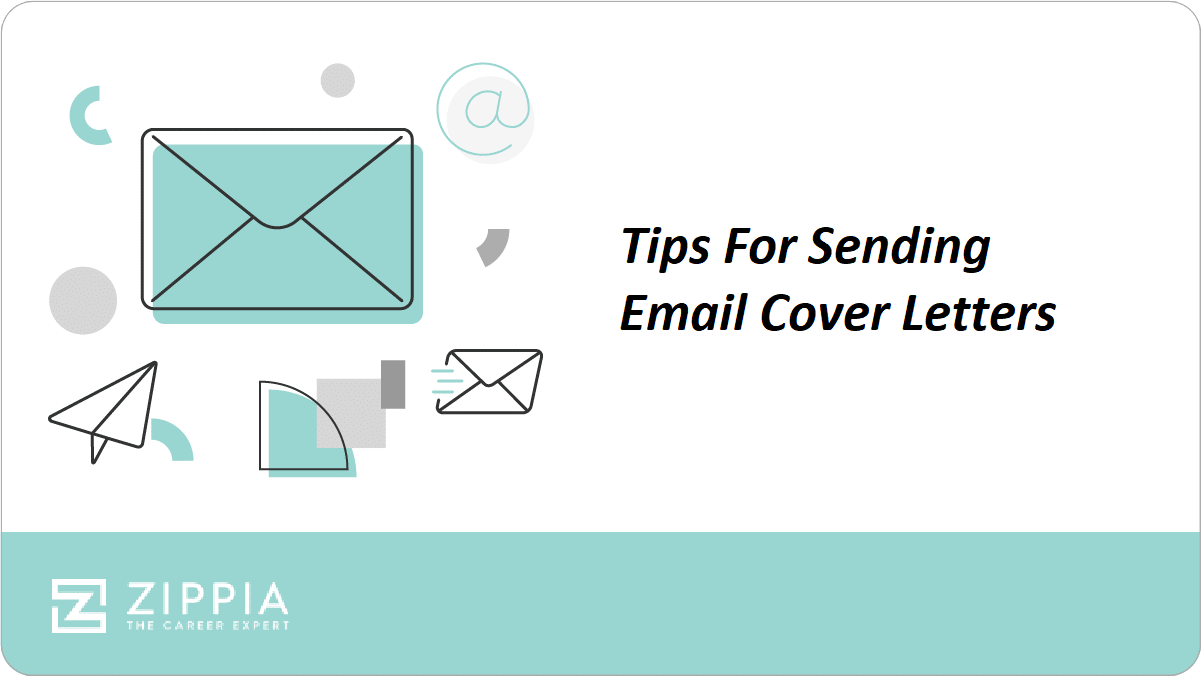
Tips For Sending Email Cover Letters

How To Write A Letter Of Intent For A Job (With Examples)

How to Close Your Cover Letter Like a Boss
- Career Advice >
- Cover Letter >
- Knowledge Base
- Free Resume Templates
- Resume Builder
- Resume Examples
- Free Resume Review
Why are cover letter font, size, and style important?
So you’ve slaved away for days on end drafting a great cover letter to go with your resume but you end up choosing an unprofessional font for your cover letter and all your hard work goes in vain because of a minor mishap.
Not exactly a situation that job seekers dream about, isn’t it?
You see, your cover letter font is important because it directly impacts your letter’s readability and appeal.
If the recruiters can’t read the contents of your cover letter with ease, the chances of you being shortlisted are slim.
Whereas, a well-chosen cover letter font with the right styling, size, space, and margin can help you make a good impression on the recruiters.
Read on to learn more about cover letter font and the following related FAQs:
- What font is best for cover letter?
- How to choose a cover letter font?
- What font size should a cover letter be?
- How to set cover letter margins and font spacing?
- What cover letter font style should you use?
- What are some common FAQs about cover letter font?
Top 10 Cover Letter Fonts
When it comes to cover letter font type, the options are plenty. The key is simply to ensure that the font you select looks professional and simple.
Here are some top cover letter fonts that you can choose from:
Times New Roman: If you want to play it safe and go for the traditional approach, Times New Roman is your best choice. This font type is widely used when candidates are applying for government jobs and other traditional industries such as law and medicine.
Helvetica: Being a contemporary font option, this is a suitable choice for your cover letter font if you are seeking jobs in marketing, sales, or business. Due to its concise design, it does not distract the readers from the content.
Calibri: With its modern and light design, Calibri makes for an elegant cover letter font. This font’s popularity has toppled Times New Roman as the default font in Microsoft Word.
Arial: If you are unsure of the type of fonts job seekers generally use in your industry, Arial is a great option for your cover letter font. Due to its sleek and minimal design, the majority of candidates prefer this font style.
Garamond: Garamond is a popular cover letter font used by job seekers in their applications. It is a classic serif font that is commonly used by professionals in both creative and academic industries.
Trebuchet MS: Due to its slightly larger and bolder design, Trebuchet MS takes up more space and is well suited for fresh graduates who are writing a short cover letter with less content.
Didot: Didot is a good cover letter font if you are applying for jobs in the fashion, architecture, or graphic design industries as this cover letter font is considered to be more artist-friendly and creative among others.
Tahoma: This cover letter font type can be a great option for job seekers from any industry as it is very reader-friendly, modern, and simple.
Georgia: Since this font is commonly used by newspapers, it is one of the most popular fonts in the writing industry. With its modern yet classic design, Georgia is a good cover letter font if you are targeting jobs in the writing or creative industries.
Cambria: If you are sending your cover letter in an online format, Cambria is a great font for your cover letter as it was specially designed to facilitate screen reading.

Also read: How to write a cover letter in 2022?
Tips on How to Choose a Cover Letter Font
Even if you want to stray away from a traditional font like Times New Roman and want your cover letter to stand out from the rest, your top priority must be your cover letter’s reader friendliness.
Your cover letter font must not distract the recruiters from its content. Avoid using fonts that include special characters or are too stylish.
Since the majority of employers use the Applicant Tracking System (ATS) to select suitable candidates based on the use of relevant keywords in their resumes and cover letters, it is best to use simple cover letter fonts to ensure that the ATS can easily scan your cover letter for the same.
However, this doesn’t mean that your cover letter font must be bland or outdated. You can choose a modern and sharp font that can help your cover letter stand out by following these tips:
Do Your Research
Yes, you need to research the company you’re targeting to probe the type of font they have used in their websites, job listings, press releases, etc.
The chances of them resonating with your cover letter will be higher when they see a familiar font in your cover letter as opposed to a completely new font.
Accordingly, choose a font (from the recommended list) that matches their font type for your cover letter.
Consider the Industry Type
When you are choosing a cover letter font, you must also consider the nature of the industry you’re in.
For instance, if you are applying for jobs in the creative industry such as graphic design, writing, fashion, marketing, etc, you can choose a font with a slightly stylish design like Didot, Helvetica, Proxima Nova, and Garamond.
While aspiring candidates in conventional industries like medical, law, and engineering fields, must stick with traditional fonts like Times New Roman and Calibri.
Ensure Uniformity
Always ensure that you use only one cover letter font throughout your letter.
Mixing and matching is the last thing you want to do in your cover letter as it will distract the recruiters from the content and it also doesn’t look professional.
Instead, you can use different font sizes and types to segregate the headings and the body.
Choose the Correct File Format
To ensure that your cover letter font remains intact, you must save your file in a PDF format unless the recruiters have specified any other format like .doc or Docx. in the listing.
Also read: What are some good cover letter examples?

Cover Letter Font Size and Spacing
The standard cover letter font size commonly used by candidates is 12 points.
However, depending on the type of font you select, the size can be changed between - 10, 11, and 12, points.
The reason is, that certain fonts can appear too small or too large at 12 points due to their spatial proportions.
And since your cover letter must not exceed one page, you can adjust your cover letter font size to fit the page.
But ensure that you don’t go below 10 points and that the smaller cover letter font size does not affect the readability.
If your font size is too small, recruiters may reject your cover letter even before reading it and the ATS may not be able to scan the small font size.
- Consider showing your cover letter to your friends and family for feedback on its reader-friendliness and appeal.
As for the cover letter margins and font spacing, ensure you follow the below-given guidelines:
- Maintain 1.5 line spacing if you are following the 3 paragraph cover letter format
- Stick to the universal business letter margin standard and keep 1" margins on all sides of your cover letter
- Use single space in your cover letter and skip a line between each section (Header, date, address, subject line, salutation, and the 3 paragraphs)
- Left-align the contents of your cover letter to follow the universal business letter standard

Also read: How to start a cover letter?
Cover Letter Font Style
Once you are done choosing the perfect cover letter font size and type, the next step is highlighting crucial details with a different cover letter font style.
While the body of your cover letter will not have any font style, you can use Bold and Italics to draw the recruiters' attention to certain details.
Avoid using cover letter font style like underlining as it serves the same purpose as bolding.
Besides, bolding is the most commonly used cover letter font style to highlight details in professional paperwork.
Also read: How to write a cover letter for resume?
FAQs about Cover Letter Font
Is 11 point font okay for a cover letter?
Yes, depending on the font type of your cover letter, the font size can range between 10-12 points.
Should my cover letter and resume be the same font?
Yes, to maintain uniformity, you must use the same font in your cover letter and resume.
Why are cover letters important?
Cover letters are important because 65% of hiring managers agreed that a well-written cover letter can influence their hiring decision.
Also Read: How to choose an ideal cover letter template in 2022?
Key Points from the Blog
- A well-chosen cover letter font with the right styling and size can help your cover letter make a good impression on the recruiters.
- Always ensure that the cover letter font you select is simple and easy to read .
- Avoid using cover letter fonts that include special characters or are too stylish as it can distract the recruiters from the content and can block the ATS from picking up keywords from your cover letter.
- Use only a single cover letter font type in your letter to ensure uniformity.
- Although the standard cover letter font size used by candidates is 12 points, you can change it between 10-12 points , according to the font type and the amount of content you have in your letter.
- Use cover letter font style like bolding to draw the recruiters' attention to crucial details.
If you are still confused over cover letter font size and style, you can simply use Hiration’s AI-powered cover letter builder which will help you draft a perfect letter without the hassle of selecting the font type or size. You can also write to us at [email protected] .

Share this blog
Subscribe to Free Resume Writing Blog by Hiration
Get the latest posts delivered right to your inbox
Stay up to date! Get all the latest & greatest posts delivered straight to your inbox
Is Your Resume ATS Friendly To Get Shortlisted?
Upload your resume for a free expert review.

- Preparation Tips
- Interview Checklist
- Questions&Answers
- Difficult Questions
- Questions to Ask
Interview Tips
- Dress for Success
- Job Interview Advice
- Behavioral Interview
- Entry Level Interview
- Information Interview
- Panel Interviews
- Group Interviews
- Phone Interviews
- Skype Interviews
- Second Interviews
- Zoom Interviews
- Job Interview Guides
- Administrative
- Call Center
- Clerical Interview
- Customer Service
- Human Resources
- Office Manager
- Project Manager
- Restaurant Jobs
- Social Work
- Interview Follow Up
- Thank You Letters
- Job References
- Employment Tests
- Background Checks
- Character References
- Accepting a Job Offer
- Decline a Job Offer
- Verbal Job Offer
- Negotiate Salary
- How to Resign
- Job Search Strategy
- Job Search Tips
- Respond to Interview Request
- Letters of Recommendation
- Surviving a Layoff
- Sample Resumes
- Resume Objectives
Cover Letters
Job Descriptions
- Job Interview Blog
- Best Articles
Privacy Policy
Best Font for Cover Letter
The best font for cover letter purposes is one that is clear and easy to read. Hiring managers will quickly pass over a cover letter that isn't instantly legible. Keep your cover letter font professional, simple and consistent with your resume font.
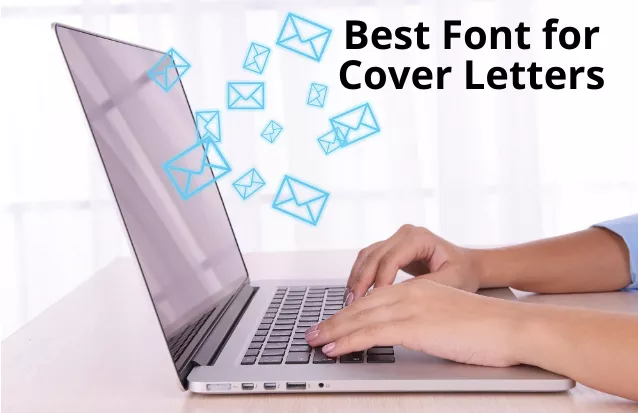
An important consideration is the fact that your cover letter may be viewed on a desktop, laptop or mobile device so stick to a universal font that renders well on all screens.
5 Best Font for Cover Letter Styles
Hiring managers and recruiters largely agree on these being the 5 best font for cover letter styles.
Helvetica is a modern favorite that works well for all cover letters. It only comes preloaded on Apple computers so Arial is an excellent alternative if you don't have a Mac.
Arial is the standard font for Google Docs and Microsoft Word, meaning that it will display accurately on all computers. It renders well on all screen sizes and its crisp lines make it clear and simple to read.
It is sometimes considered too familiar and bland for jobs in creative and trendy companies and a more contemporary font may be better suited for these type of cover letters
2. Times New Roman
Times New Roman is a popular and traditional font that presents as classic and professional. It is a good cover letter font to use when you want to convey a serious and formal approach. An appropriate choice for jobs in traditional and conservative industries.
3. Trebuchet MS
A less used, modern and clean cover letter font with an energetic feel. Very easy to read and renders well on all screen sizes, particularly smaller devices.
Its thicker lines and wider body makes it useful when you are trying to fill up space such as for entry level cover letters. A good choice for jobs in marketing, media, publishing and start-ups.
This font has taken the place of Times New Roman as the MS Office default font so it is familiar and easy to access on all devices. Its tighter layout is useful when you have to fit a large amount of text on one page for your cover letter.
A modern and clean font that has been described as warm and gentle by its designer, this cover letter font works well for jobs in nursing, social work, teaching and care-related professions
A classic font with a contemporary feel that was designed specifically for easy reading on computer and mobile screens.
An ideal font for a professional cover letter look with elements of elegance and trendiness.
All of these 5 cover letter fonts are legible, clean-looking, professional and render accurately on most devices. They are unlikely to cause problems with Applicant Tracking Systems (ATS) and will ensure your cover letter can be easily read. They are suitable for both on-screen and print versions of your cover letter.
What is the best font for cover letter style?
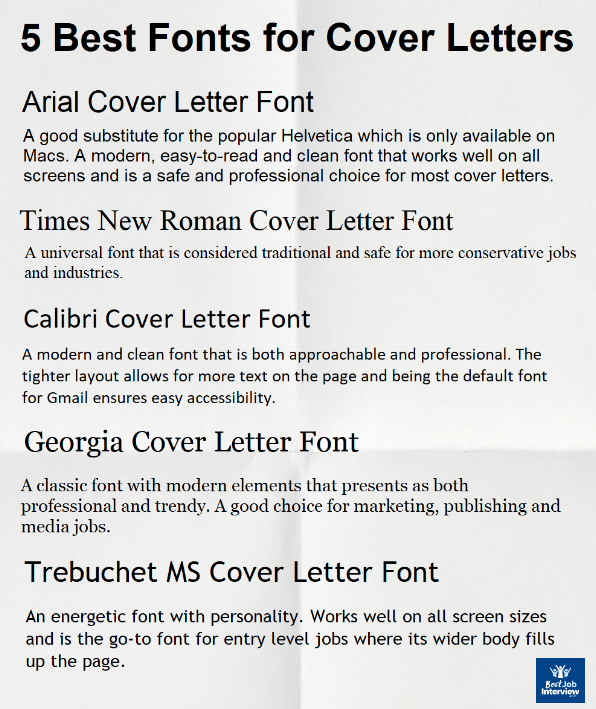
Top tips for best font for cover letter
- stick to one font style and size throughout your cover letter
- your cover letter and resume font should be the same style and size to present a consistent and professional look
- italics, bold and highlighting should be used sparingly, if at all, as they detract from the clean and easy-to-read look of your cover letter
- ensure your cover letter fits on one page
- Print your cover letter, even if you are going to upload it online, to make sure that it looks the way you want
What is the best cover letter font size?
Your cover letter font should be sufficient size to be easy to read but not so big that your cover letter does not fit on one page. You may need to try a couple of different sizes to make sure that your cover letter is legible and fits on a single page.
For most font styles 12-point is the standard size and is easy to scan and read in different formats. Some fonts may look better at 10.5- or 11-point. To find the best size for your cover letter, try each of the standard sizes to find the most legible version.
If your cover letter includes a heading with your name and contact details you may choose to make this slightly bigger than the body text. If this creates problems with keeping your cover letter to a single page, rather bold those details.
How to format your font and cover letter
Include sufficient white space for a clean, easy-to-scan and legible look. There needs to be space at the top of the letter and between each paragraph of your cover letter. Using bullet points is a useful way to increase legibility and to make an impact with your cover letter.
Use the right spacing for your cover letter for readability. Single, double and 1.5 spacing are the most common selections.
The cover letter must be clearly formatted and easy to read. Long sentences and insufficient line spacing are to be avoided because they clutter the letter and make it hard to scan and read quickly.
How to create a cover letter that works
How to save and send your cover letter
Save your cover letter correctly. The best way to do this is to save it as a PDF file to preserve its original appearance and style.
Send it as a PDF attachment to an email message. Copying-and-pasting a cover letter into the body of your email message may corrupt the formatting and make it hard to read for the hiring manager who may well have a different computer system. When you email your cover letter in word processing format, such as a Microsoft Word file, the formatting may not transfer properly.
A good way to check if your cover letter renders correctly is to send the email with the attachment to yourself first so you can review it before sending it to the hiring manager.
Font styles to avoid in your cover letter
Just as there are best font for cover letter styles there are some fonts you should never use for your cover letter.
- avoid unprofessional and novelty-type fonts such as Comic Sans which come across as childish
- avoid heavy and bold cover letter fonts such as Impact which are hard to read and look messy
- Fonts that try to look like type (Lucida Console) or handwriting (Script) are considered insufficiently professional or serious
What is the best font for resumes?
You can find a great article on the best resume fonts for 2023 plus loads of tips on writing a job-winning resume.
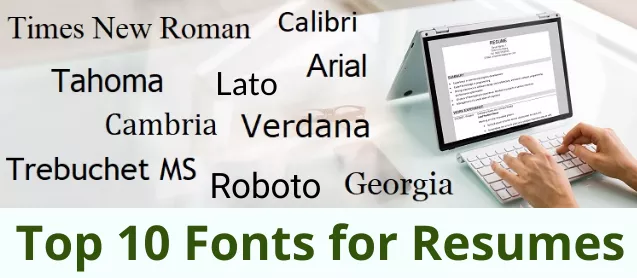
How to write a convincing cover letter
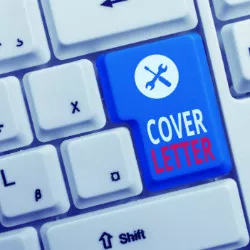
COVER LETTERS
Over 50 Sample Cover Letters
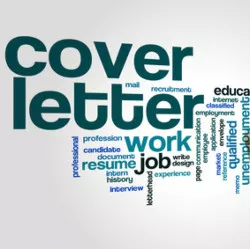
4 Cover Letter Formats

Sample Email Cover Letter
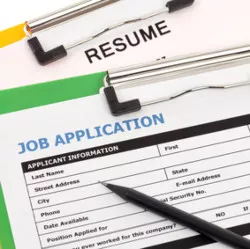
Basic Cover Letter Template
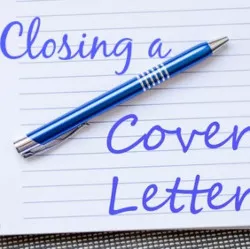
How to Close a Cover Letter

How to Start a Cover Letter
Entry Level Cover Letters
To Top of Page
Don't Miss These Latest Updates
Problem-solving is a key skill for today's workplace. Problem-solving behavioral interview questions
Compelling sample interview answers to "Why do you want to work for this company?"
11 essential supervisor interview questions and answers plus industry specific supervisor Q&A .
How to ask for a letter of recommendation with this sample email requesting letter of recommendation .
What are the top 10 reasons for leaving your job? Find out acceptable reasons for leaving a job.
Sample employment acceptance letter and email to properly confirm your acceptance of the job offer and employment contract.
What are your strengths? Find out the 11 essential workplace strengths at list of strengths and weaknesses
Interview Preparation
Interview Questions & Answers
Interview Guides
After the Interview
The Job Offer
Latest News
© Copyright 2023 | Best-Job-Interview.com | All Rights Reserved.
- Search Search Please fill out this field.
- Career Planning
- Finding a Job
- Cover Letters
How to Write a Job Application Letter (With Examples)
:max_bytes(150000):strip_icc():format(webp)/ADHeadshot-Cropped-b80e40469d5b4852a68f94ad69d6e8bd.jpg)
What Is a Job Application Letter?
Tips for writing a job application letter, how to get started.
- Writing Guidelines
- What to Include in Each Section
Simple Formatting Using a Template
Tips for writing an effective letter, sample job application letter, sending an email application, review more letter examples.
Do you need to write a letter to apply for a job? Most of the time, the answer is yes. Even when employers don’t require a job application letter , writing one will help you highlight your skills and achievements and get the hiring manager’s attention. The only time not to send one is when the job listing says not to do so. It can help, and it definitely won't hurt to include an application letter with your resume.
A job application letter, also known as a cover letter , should be sent or uploaded with your resume when applying for jobs. While your resume offers a history of your work experience and an outline of your skills and accomplishments, the job application letter you send to an employer explains why you are qualified for the position and should be selected for an interview.
Writing this letter can seem like a challenging task. However, if you take it one step at a time, you'll soon be an expert at writing application letters to send with your resume.
Melissa Ling / The Balance
Before you begin writing your job application letter, do some groundwork. Consider what information you want to include, and keep in mind that space is limited.
Remember, this letter is making a case for your candidacy for the position. But you should do more than just regurgitate your resume. Instead, highlight your most relevant skills, experiences, and abilities.
Analyze the Job Posting
To include the most convincing, relevant details in your letter, you'll need to know what the employer wants.
The biggest clues are within the job advertisement, so spend some time decoding the job listing . Next, match your qualifications with the employer's wants and needs.
Include Your Most Relevant Qualifications
Make a list of your relevant experience and skills. For instance, if the job ad calls for a strong leader, think of examples of when you've successfully led a team. Once you've jotted down some notes and have a sense of what you want to highlight in your letter, you're ready to start writing.
Writing Guidelines for Job Application Letters
Writing a job application letter is very different from a quick email to a friend or a thank-you note to a relative. Hiring managers and potential interviewers have certain expectations when it comes to the letter's presentation and appearance, from length (no more than a page) and font size to style and letter spacing . Keep these general guidelines in mind, but always stick to any explicit instructions in the job listing or application portal.
Length: A letter of application should be no more than one page long. Three to four paragraphs are typical.
Format and Page Margins: A letter of application should be single-spaced with a space between each paragraph. Use 1-inch margins and align your text to the left, which is the standard alignment for most documents.
Font: Use a traditional font such as Times New Roman, Arial, or Calibri. The font size should be between 10 and 12 points.
What to Include in Each Section of the Letter
There are also set rules for the sections included in the letter, from salutation to sign-off, and how the letter is organized. Here's a quick overview of the main sections included in a job application letter:
Heading: A job application letter should begin with both your and the employer's contact information (name, address, phone number, email), followed by the date. If this is an email rather than an actual letter, include your contact information at the end of the letter, after your signature.
- Header Examples
Salutation: This is your polite greeting. The most common salutation is "Dear Mr./Ms." followed by the person's last name. Find out more about appropriate cover letter salutations , including what to do if you don't know the person's name or are unsure of a contact's gender.
Body of the letter: Think of this section as having three distinct parts.
In the first paragraph , you'll want to mention the job you are applying for and where you saw the job listing.
The next paragraph(s) are the most important part of your letter. Remember how you gathered information about what the employer was seeking, and how you could meet their needs? This is where you'll share those relevant details on your experience and accomplishments.
The third and last part of the body of the letter will be your thank you to the employer; you can also offer follow-up information.
Complimentary Close: Sign off your email or letter with a polite close, such as "Best," or "Sincerely," followed by your name.
- Closing Examples
Signature: When you're sending or uploading a printed letter, end with your handwritten signature, followed by your typed name. If this is an email, simply include your typed name, followed by your contact information.
- Signature Examples
Overwhelmed by all these formatting and organization requirements? One way to make the process of writing a job application easier is to use a template to create your own personalized letters. Having a template can help save you time if you are sending a lot of application letters.
Be sure that each letter you send is personalized to the company and position; do not send the same letter to different companies.
- Always write one. Unless a job posting explicitly says not to send a letter of application or cover letter, you should always send one. Even if the company does not request a letter of application, it never hurts to include one. If they do ask you to send a letter, make sure to follow the directions exactly (for example, they might ask you to send the letter as an email attachment or type it directly into their online application system).
- Use business letter format. Use a formal business letter format when writing your letter. Include your contact information at the top, the date, and the employer’s contact information. Be sure to provide a salutation at the beginning and your signature at the end.
- Sell yourself. Throughout the letter, focus on how you would benefit the company. Provide specific examples of times when you demonstrated skills or abilities that would be useful for the job, especially those listed in the job posting or description. If possible, include examples of times when you added value to a company.
Numerical values offer concrete evidence of your skills and accomplishments.
- Use keywords. Reread the job listing, taking note of any keywords (such as skills or abilities that are emphasized in the listing). Try to include some of those words in your cover letter. This will help the employer see that you are a strong fit for the job.
- Keep it brief. Keep your letter under a page long, with no more than about four paragraphs. An employer is more likely to read a concise letter.
- Proofread and edit. Employers are likely to overlook an application with a lot of errors. Read through your cover letter, and if possible, ask a friend or career counselor to review the letter. Proofread for any grammar or spelling errors.
This is a job application letter sample. Download the letter template (compatible with Google Docs or Word Online) or read the example below.
Sample Job Application Letter (Text Version)
Elizabeth Johnson 12 Jones Street Portland, Maine 04101 555-555-5555 elizabethjohnson@emailaddress.com
August 11, 2024
Mark Smith Human Resources Manager Veggies to Go 238 Main Street Portland, Maine 04101
Dear Mr. Smith,
I was so excited when my former coworker, Jay Lopez, told me about your opening for an administrative assistant in your Portland offices. A long-time Veggies to Go customer and an experienced admin, I would love to help the company achieve its mission of making healthy produce as available as takeout.
I’ve worked for small companies for my entire career, and I relish the opportunity to wear many hats and work with the team to succeed. In my latest role as an administrative assistant at Beauty Corp, I saved my employer thousands of dollars in temp workers by implementing a self-scheduling system for the customer service reps that cut down on canceled shifts. I also learned web design and timesheet coding, and I perfected my Excel skills.
I’ve attached my resume for your consideration and hope to speak with you soon about your needs for the role.
Best Regards,
Elizabeth Johnson (signature hard copy letter)
Elizabeth Johnson
When you are sending your letter via email include the reason you are writing in the subject line of your message:
Subject Line Example
Subject: Elizabeth Johnson – Administrative Assistant Position
List your contact information in your signature, rather than in the body of the letter:
Email Signature Example
Elizabeth Johnson 555-555-5555 email@emailaddress.com
Review more examples of professionally written cover letters for a variety of circumstances, occupations, and job types.
CareerOneStop. " How Do I Write a Cover Letter? "
University of Maryland Global Campus. " Cover Letters ."
How to Select a Professional Letter Font and Font Size
- Letters & Emails
- Skills & Keywords
- Salary & Benefits
- Job Listings
- Job Interviews
- Cover Letters
- Career Advice
- Work-From-Home Jobs
- Internships
The Best Font to Choose
What size font to use, tips on font style, how to select a font, proofread your letter carefully.
What's the best font to use for a business letter? When writing formal letters, of course, it's important to make sure the content of your letter is clear and easy to understand. However, you should also think carefully about the font and font size.
The font is the style of the text you use in your letter or email message. It's important to make sure the font you choose for your professional correspondence, both printed and emailed, is clear and easy to read. Otherwise, your reader might not take the time to read your letter.
This is particularly important when writing job application letters, such as cover letters . If an employer cannot easily read your letter because the font is too small or too difficult to read, they may not bother to look at your resume .
Your best bet is to keep your font and font size simple and professional . Make sure your message—not your font—stands out.
It's important to select a font that is easy to read. You should select a font that is large enough so that the reader doesn't have to squint to read your letter, but not so big that your letter doesn't fit well on a single page.
Using a simple font will ensure that your message is clear. Basic fonts like Arial, Cambria, Calibri, Verdana, Courier New, and Times New Roman work well. Avoid novelty fonts like Comic Sans, or fonts in script or handwriting style.
Once you have selected your font style, select a 10- or 12-point font size. The size will depend on how much content you have; it's best if you can format your letter so it fits on one page.
If your letter has a heading (such as a heading with your name and contact information), you might choose to make the heading font slightly larger (14 or 16). However, this is not necessary.
In addition, avoid writing in all capital letters when you format your letter. Letters and email messages in all caps make it seem as if you are yelling. Also avoid underlining, bolding, and italicizing; these can make text difficult to read.
You may need to try a few font styles and size variations so your letter fits on a single page with enough white space that it's not crowded.
Below are steps to take when writing a letter and selecting a font size and style:
- Select a font from the list at the top of your document before you start writing your letter, or:
- Type your letter.
- Highlight the content of your letter.
- Either select the font from the pop-up window or select the font from the list at the top of the document.
- Select the font size you want to use the same way. Try some different fonts and font sizes until the letter fits onto one page. Again, make sure there is white space in your letter. Consider playing with the spacing and margins as well.
- Proofread your letter.
After completing and proofreading your draft, print your letter (even if you are going to upload it online or email it) to make sure that it is formatted, properly spaced, and looks the way you want it to.
Include Plenty of White Space
Regardless of the font and font size you select, there should be white space at the top, bottom, and sides of your letter. You also want to leave some white space between each paragraph, after the body of the letter and before your closing, and between the closing and your signature. A squished letter without enough spacing is hard to read.
More Tips on Spacing Your Letter:
- Keep your letter to one page or less, if possible. Email letters should be a few paragraphs long and be easy to scan.
- Align your cover to the left.
- For email letters, use your formatted email signature to close the message.
Try a variety of font types and sizes to see which one allows you to fit your letter on one page, while still leaving some white space.
You might also adjust the margins of the page to be slightly bigger or smaller to keep some white space while making the letter fit on one page. As a general rule, margins should be no wider than 1” and no narrower than .7”.
Be sure to thoroughly proofread your letter for grammar and spelling errors. Even if your font and font size are easy to read, errors will make you look unprofessional. If this is a cover letter, an error might even cost you a job offer. More proofreading tips:
- Read your letter out loud . You’ll find any typos and might also spot opportunities to improve your word choice and sentence structure.
- Check and double-check the spelling of all company and personal names.
- Take a break before you review your final document . You may find errors with fresh eyes that you wouldn’t have found right after writing the letter.
- Ask an eagle-eyed friend to review your letter before you send it.
- For email letters, be sure to send yourself a test message before emailing the document to a hiring manager. You might uncover spacing oddities and formatting errors that you wouldn’t have seen without a test.
Once it's set, send the letter and cc: yourself so you have a copy for your records.
- Formal Letter Closing and Signature Examples
- Sample Professional Letter Formats
- How to Introduce Yourself in an Email (With Examples)
- Email Etiquette Tips for Job Seekers
- The Best Font Styles and Size for Email
- Business Letter Layout Example
- Professional Letter and Email Writing Guidelines
- Marketing Cover Letter Example and Writing Tips
- Tips for Sending Email When You're Job Hunting
- Professional Business Letter Template
- Guidelines for Writing Great Thank-You Letters
- Different Types of Letters With Examples
- Sample Internship Interview Thank-You Letters
- Format for Writing an Interview Thank-You Letter
- Information Security Analyst Job Cover Letter and Resume
- Job Search Help Thank You Letter Examples
Purdue Online Writing Lab Purdue OWL® College of Liberal Arts
Welcome to the Purdue Online Writing Lab

Welcome to the Purdue OWL
This page is brought to you by the OWL at Purdue University. When printing this page, you must include the entire legal notice.
Copyright ©1995-2018 by The Writing Lab & The OWL at Purdue and Purdue University. All rights reserved. This material may not be published, reproduced, broadcast, rewritten, or redistributed without permission. Use of this site constitutes acceptance of our terms and conditions of fair use.
The Online Writing Lab at Purdue University houses writing resources and instructional material, and we provide these as a free service of the Writing Lab at Purdue. Students, members of the community, and users worldwide will find information to assist with many writing projects. Teachers and trainers may use this material for in-class and out-of-class instruction.
The Purdue On-Campus Writing Lab and Purdue Online Writing Lab assist clients in their development as writers—no matter what their skill level—with on-campus consultations, online participation, and community engagement. The Purdue Writing Lab serves the Purdue, West Lafayette, campus and coordinates with local literacy initiatives. The Purdue OWL offers global support through online reference materials and services.
A Message From the Assistant Director of Content Development
The Purdue OWL® is committed to supporting students, instructors, and writers by offering a wide range of resources that are developed and revised with them in mind. To do this, the OWL team is always exploring possibilties for a better design, allowing accessibility and user experience to guide our process. As the OWL undergoes some changes, we welcome your feedback and suggestions by email at any time.
Please don't hesitate to contact us via our contact page if you have any questions or comments.
All the best,
Social Media
Facebook twitter.

IMAGES
VIDEO
COMMENTS
8. Trebuchet MS. Boasting thick lines and simple curves, Trebuchet MS is a great choice if you need to fill space or make your cover letter extra easy to read. Designed for Microsoft Word, this font can now be found on most word processing software, including Google Docs.
The best font for a cover letter should be simple, clear, and match the font you use in your resume. The most popular choices include Times New Roman, Arial, Calibri, and Verdana. The font size should be set to 12pt and it's best to limit yourself to just one typeface. But that's not the full answer on what font is suitable for a cover letter.
Using one font for both your cover letter and resume creates consistency and looks more professional. 2. Opt for a professional and easy-to-read cover letter font. When choosing a cover letter font, select a simple option that conveys your professionalism. Since the hiring team may read your application on a desktop, laptop or mobile device ...
Pick the optimal cover letter font size. When selecting a font size, you have three options: size 10, 11 or 12. It is essential that your cover letter fits on one page, so opt for a size 10 or 11 font if it's spilling onto a second page. If you have a lot of room to spare, choose a size 12 font. As tempting as it may be, never go below a size ...
Helvetica: This font is a sans serif font with a concise design. When utilized for a cover letter, it does not distract a reader from the content. If you're applying to a contemporary workplace, Helvetica is a suitable choice. Times New Roman: A classic serif font, Times New Roman is widely used in job applications.
This is a great font to use if you want to give your cover letter a basic and formal appearance. Georgia. This was designed to be read on computer screens and mobile devices. This is perfect if you plan on sending your cover letter over email. Garamond. This is one of the best fonts for a cover letter.
Select a font from the list at the top of your document before you start writing your letter, or: Type your cover letter. Highlight the content of your letter. Either select the font from the pop-up window or select the font from the list at the top of the document. Select the font size you want to use the same way. Proofread your cover letter.
Times New Roman becomes hard to read in small sizes. Overall, Georgia is a great cover letter font option for those who want to add some extra "personality" to your cover letter, while still maintaining professionalism. 5. Garamond. Garamond is another fine example of a time-tested font.
Here are five steps to follow when choosing a font for your cover letter: 1. Consider your intentions. Before choosing your font, think about the aim of your job application. It's often beneficial to create a cover letter that makes the hiring manager notice you, as it gives you an advantage over other candidates.
Arial: Sort of like a Helvetica for the 21st century, Arial is a modern sans serif font popular for its legibility and clean lines.This one always makes the list of best fonts for cover letters. This is Arial. Calibri: Another good sans serif option, Calibri is the current default font for Microsoft Word.; This is Calibri. Cambria: A good-looking serif font designed for computer screens ...
Picking an appropriate font size for a cover letter. The size of your font is equally as important as choosing the correct font for your cover letter. If the text of your letter is too small or visibly challenging, your application might be passed up for another candidate. There are three general options when picking a font size, 10, 11, or 12.
Choose an appropriate font for your application letter, like Calibri or Helvetica. Set the font size between 10 and 12 pt. Adjust margins to at least 1 inch on all sides. Use 1.0 or 1.15 line spacing and insert an additional line between paragraphs. Align text to the left or use justified alignment.
Arial: If you are unsure of the type of fonts job seekers generally use in your industry, Arial is a great option for your cover letter font. Due to its sleek and minimal design, the majority of candidates prefer this font style. Garamond: Garamond is a popular cover letter font used by job seekers in their applications.
Here are some steps you can use to decide on the best font size for your cover letter: 1. Consider your audience. One way to choose an effective font size is to think about the preferences of your potential readers. For example, if you're interested in working for a company with more traditional values in a highly technical industry, you might ...
Hiring managers and recruiters largely agree on these being the 5 best font for cover letter styles. 1. Arial. Helvetica is a modern favorite that works well for all cover letters. It only comes preloaded on Apple computers so Arial is an excellent alternative if you don't have a Mac. Arial is the standard font for Google Docs and Microsoft ...
Follow these steps to compose a compelling application letter: 1. Research the company and job opening. Thoroughly research the company you're applying to and the specifications of the open position. The more you know about the job, the better you can customize your application letter. Look for details like:
Format of an Application Letter. Create enough spacing: 1-1.15 between lines, 1-inch margins, double space between paragraphs. Choose the font: Garamond, Helvetica, or Arial in 11-12 points in a font size. Align the content to the left. Pick the file format: PDF, unless the recruiter requested a Word file specifically.
Use the same font you chose for your resume. Left-align all content. Keep your application letter length to only one page. Just like with your resume margins, set them to 1-inch on your job application letter as well. Leave ample white space by using double-spacing between paragraphs and setting line spacing to 1.15.
Middle paragraph (s) Closing paragraph. Letter ending and signature. Your cover letter should be one page long and use a simple, professional font, such as Arial or Helvetica, 10 to 12 points in size. Your letter should be left-aligned with single spacing and one-inch margins. Show Transcript.
Heading: A job application letter should begin with both your and the employer's contact information (name, address, phone number, email), followed by the date. If this is an email rather than an actual letter, include your contact information at the end of the letter, after your signature. Header Examples.
Type your letter. Highlight the content of your letter. Either select the font from the pop-up window or select the font from the list at the top of the document. Select the font size you want to use the same way. Try some different fonts and font sizes until the letter fits onto one page. Again, make sure there is white space in your letter.
Single-space your cover letter. Cover letters shouldn't be double-spaced. Add a blank line between each section of your cover letter. (After your address, the date, their address, your salutation, and each paragraph.) Add three blank lines after "Best regards," or "Yours truly.". Cover letter margins are one inch.
You've found an internship, and it's exactly the opportunity you've been looking for to put you on the path to your dream job. But, the internship application requires you to send a cover letter.. Cover letters give you space to contextualize how your previous work experience and relevant skills make you a good fit for the position.
The Online Writing Lab at Purdue University houses writing resources and instructional material, and we provide these as a free service of the Writing Lab at Purdue.